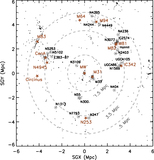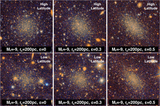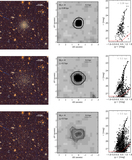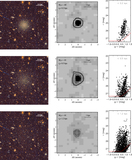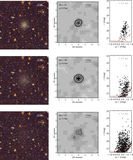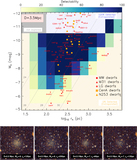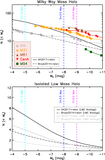Image Details
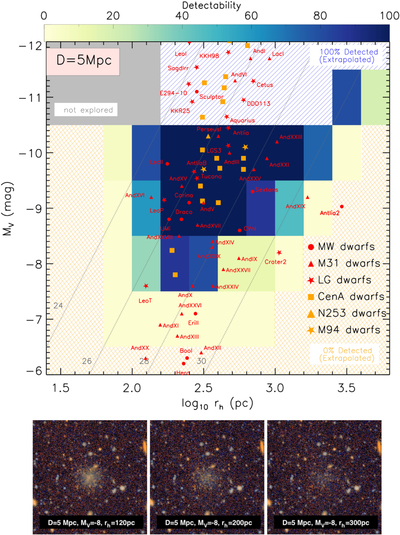
Caption: Figure 9.
Top: results of our artificial resolved dwarf tests at a distance of 5 Mpc. It shows the size–luminosity space probed by our tests, along with known Local Group dwarfs (red symbols), Cen A dwarfs (orange squares), NGC 253 dwarfs (orange triangles), and M94 dwarfs (orange stars). Lines of constant V-band surface brightness are shown at 24, 26, 28, and 30 mag arcsec−2. The colored region shows the recovery completeness map for our simulated dwarfs in size–luminosity space. The blue hatched area at bright magnitudes denotes the approximate region where dwarfs should be easily detected (with ∼100% efficiency), while the orange hatched region corresponds to regions with little chance of dwarf detection (with a presumed 0% recovery); we have not explicitly explored these regions with our simulations. Bottom: RGB false-color images of example simulated faint dwarf galaxies. For each image cutout, the size is 1′ × 1′. Our experiments show that dwarfs as faint as these will be detectable out to 5 Mpc.
Copyright and Terms & Conditions
© 2021. The American Astronomical Society. All rights reserved.


